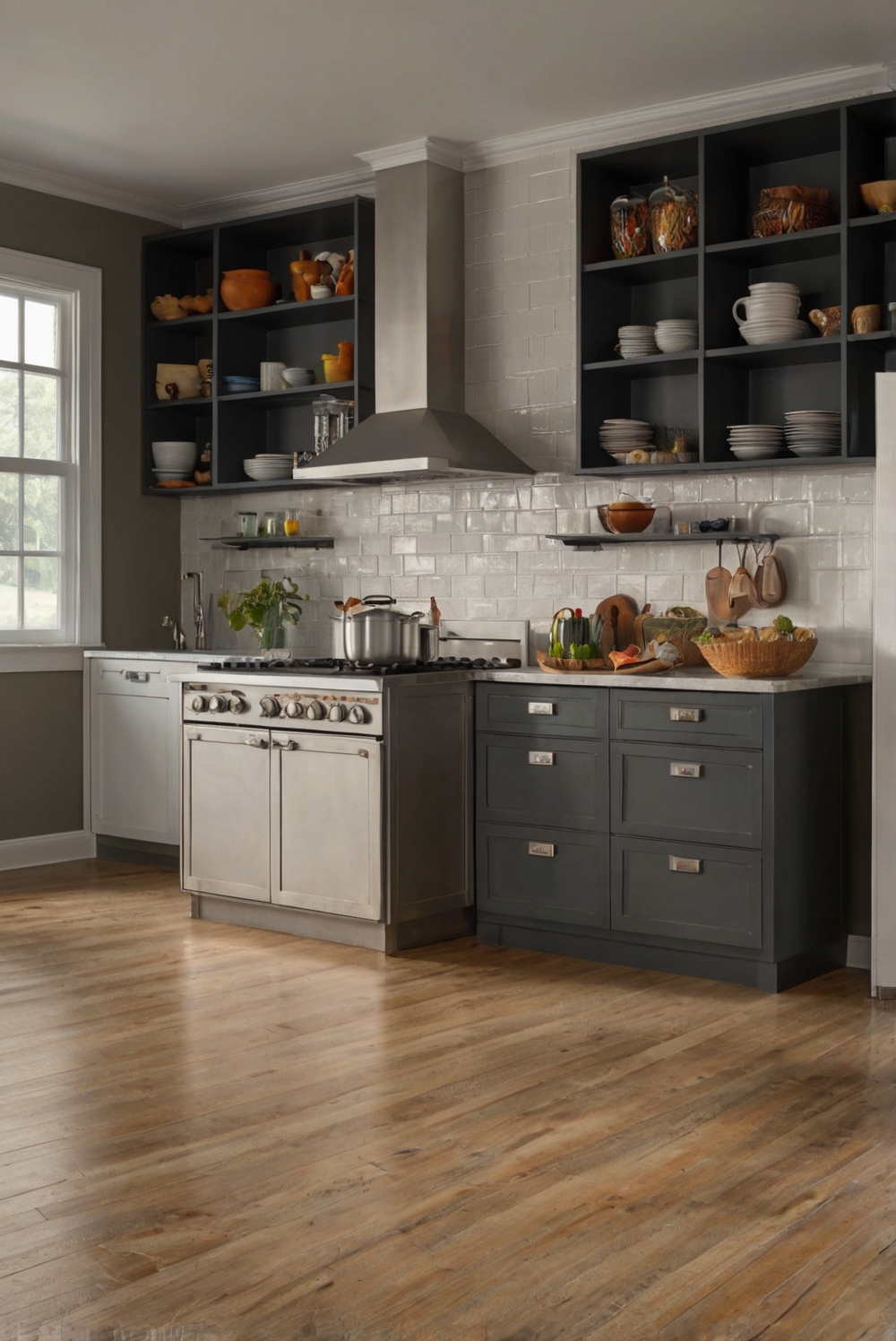Explore the perfect flooring material and color options that will enhance your kitchen design. Master your interior designer routine with these expert tips.
Which flooring material and color complement your kitchen design?
**Tile flooring** is a popular choice for kitchens due to its durability and ease of cleaning. It comes in a variety of colors and patterns, allowing you to find the perfect match for your kitchen design. Light-colored tiles can make a small kitchen feel more spacious, while darker tiles can add warmth and coziness to a large kitchen. Additionally, tiles are resistant to water and heat, making them ideal for a busy kitchen environment. Consider **porcelain** or **ceramic** tiles for a practical flooring solution that complements your kitchen design.
When choosing a flooring material and color for your kitchen, it’s important to consider the overall design scheme and color palette of the room. Light-colored flooring can brighten up a dark kitchen, while dark-colored flooring can add drama to a light and airy space. Take into account the size of your kitchen and the amount of natural light it receives when selecting a flooring color.
In terms of practicality, **hardwood flooring** is a timeless option that adds warmth and character to a kitchen. It is easy to clean and maintain, but may not be as durable as tile in high-traffic areas. **Laminate flooring** is a budget-friendly alternative that mimics the look of hardwood or tile, but may not stand up as well to moisture and heat.
Another important factor to consider is the layout and traffic flow of your kitchen. For open-concept kitchens that flow into other living spaces, a seamless flooring transition can create a cohesive design scheme. Consider using the same flooring material throughout the entire space for a unified look.
Overall, the right flooring material and color can enhance the aesthetic appeal and functionality of your kitchen. By considering factors such as durability, design cohesion, and traffic flow, you can select a flooring option that complements your kitchen design while adding value to your home.
Which flooring material and color complement your kitchen design?
When choosing the right flooring material for your kitchen, it is crucial to consider the overall design and style of the space. The flooring plays a significant role in enhancing the aesthetics and functionality of your kitchen. Here are some important factors to consider:
1. Kitchen Style:
Before selecting the flooring material, assess the style of your kitchen. If you have a modern kitchen with sleek cabinets and stainless steel appliances, consider materials like hardwood, laminate, or ceramic tile for a clean and contemporary look. For a more traditional kitchen with wooden cabinets and vintage accents, opt for natural stone or vinyl flooring.
2. Durability:
Since the kitchen is a high-traffic area prone to spills and stains, durability is key when choosing flooring. Hardwood and ceramic tile are durable options that can withstand heavy foot traffic and spills. Vinyl and laminate flooring are also durable and easy to maintain, making them ideal choices for busy kitchens.
3. Color Coordination:
When selecting the color of your kitchen flooring, consider the existing color scheme of the space. For a cohesive look, choose a flooring color that complements the cabinets, countertops, and backsplash. Light-colored flooring can make a small kitchen appear more spacious, while dark-colored flooring adds warmth and depth to a large kitchen.
Choosing the Right Flooring Color:
When it comes to selecting the right color for your kitchen flooring, consider the following factors:
1. Light vs. Dark Colors:
Light-colored flooring, such as white oak or light gray tiles, can brighten up a dark kitchen and create a sense of openness. Dark-colored flooring, like espresso hardwood or black granite, adds a touch of elegance and sophistication to a light-filled kitchen.
2. Contrast and Balance:
Creating a balance between the flooring color and other elements in the kitchen is essential. If you have dark cabinets and countertops, opt for a lighter flooring color to create contrast and prevent the space from feeling too heavy. Conversely, light cabinets and countertops can be complemented by dark flooring to anchor the space.
By carefully considering the style, durability, and color coordination of your kitchen flooring, you can select the perfect material and color that complements your kitchen design. Whether you prefer a modern, traditional, or eclectic kitchen style, there are numerous flooring options available to suit your needs and preferences.
Additionally, consulting with a professional interior designer or flooring expert can provide valuable insights and recommendations based on your specific kitchen design and requirements. They can help you navigate the wide range of flooring materials and colors available in the market, ensuring that you make an informed decision that enhances the overall look and functionality of your kitchen.

